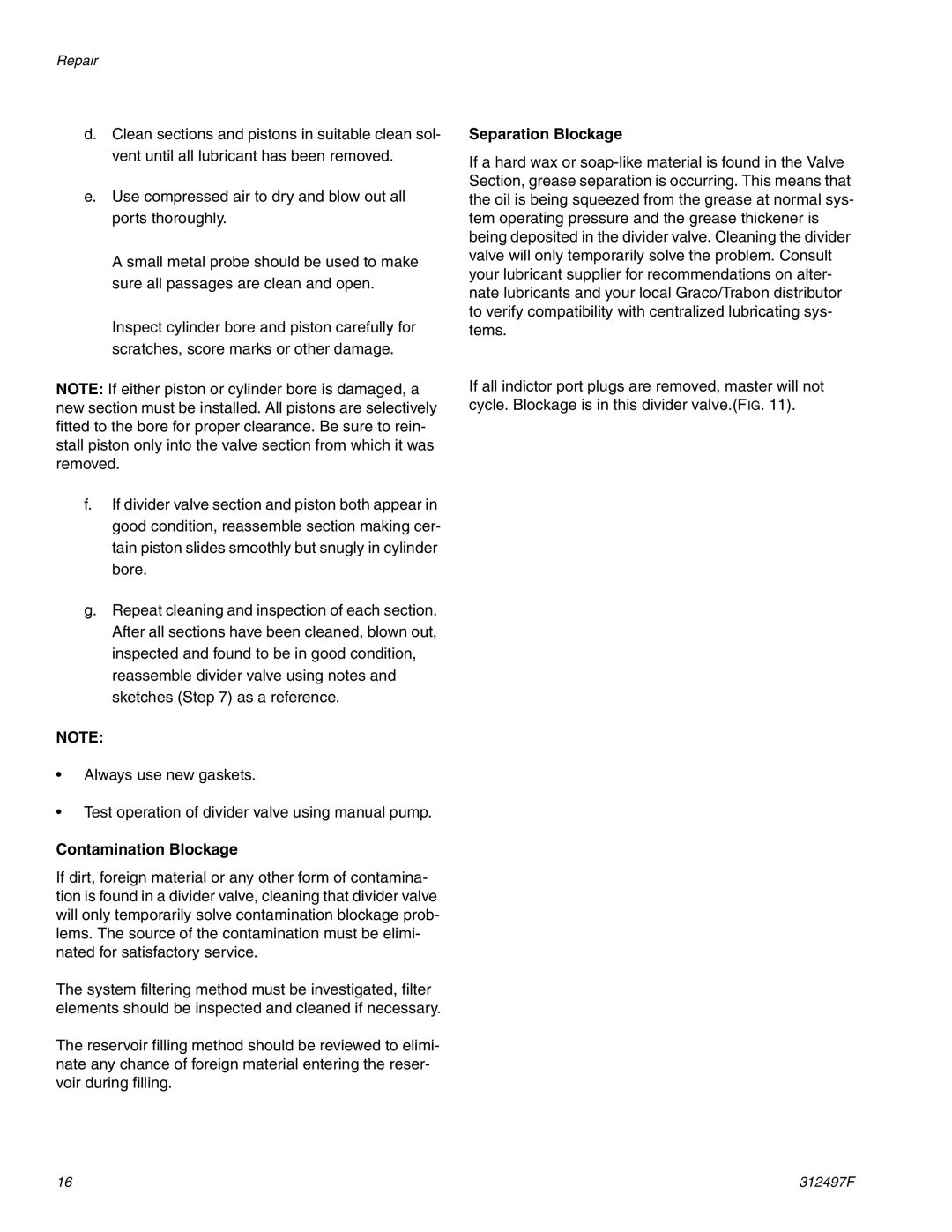Repair
d.Clean sections and pistons in suitable clean sol- vent until all lubricant has been removed.
e.Use compressed air to dry and blow out all ports thoroughly.
A small metal probe should be used to make sure all passages are clean and open.
Inspect cylinder bore and piston carefully for scratches, score marks or other damage.
NOTE: If either piston or cylinder bore is damaged, a new section must be installed. All pistons are selectively fitted to the bore for proper clearance. Be sure to rein- stall piston only into the valve section from which it was removed.
f.If divider valve section and piston both appear in good condition, reassemble section making cer- tain piston slides smoothly but snugly in cylinder bore.
g.Repeat cleaning and inspection of each section. After all sections have been cleaned, blown out, inspected and found to be in good condition, reassemble divider valve using notes and sketches (Step 7) as a reference.
NOTE:
•Always use new gaskets.
•Test operation of divider valve using manual pump.
Contamination Blockage
If dirt, foreign material or any other form of contamina- tion is found in a divider valve, cleaning that divider valve will only temporarily solve contamination blockage prob- lems. The source of the contamination must be elimi- nated for satisfactory service.
The system filtering method must be investigated, filter elements should be inspected and cleaned if necessary.
The reservoir filling method should be reviewed to elimi- nate any chance of foreign material entering the reser- voir during filling.
Separation Blockage
If a hard wax or
If all indictor port plugs are removed, master will not cycle. Blockage is in this divider valve.(FIG. 11).
16 | 312497F |
